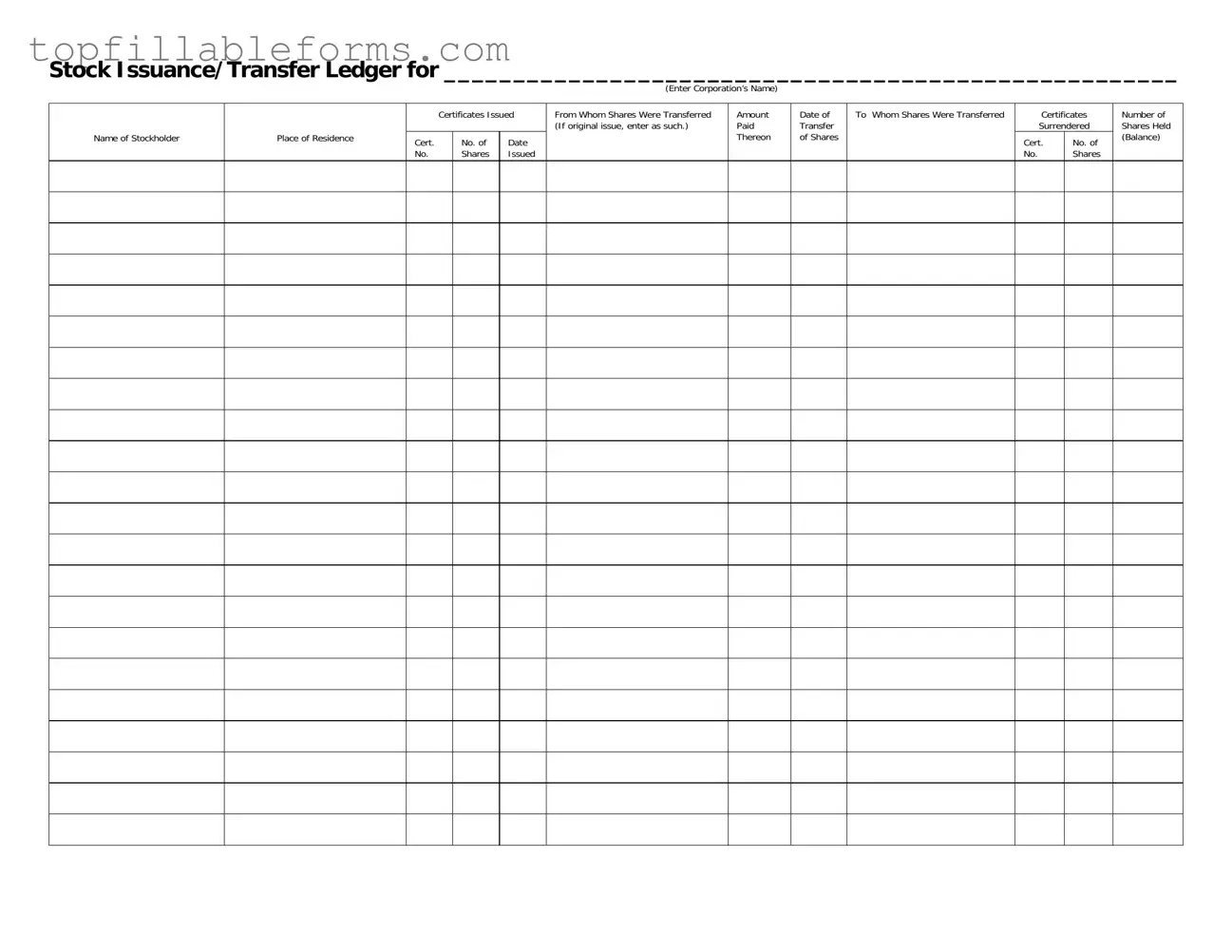Printable Stock Transfer Ledger Form in PDF
The Stock Transfer Ledger form is a crucial document used to record the issuance and transfer of shares within a corporation. It captures essential information, including the names of stockholders, the certificates issued, and the details of any transfers. This form ensures transparency and accuracy in maintaining a corporation's stock records, which is vital for both legal compliance and shareholder communication.
Open Stock Transfer Ledger Editor Here

